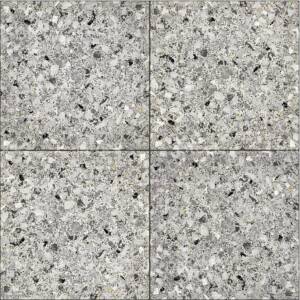Project Report For Granite Tiles
Introduction
Project report for granite tiles is as follows.
The most attractive and durable material used in construction is granite. In homes, workplaces, hotels, restaurants, hospitals, temples, and other buildings, it is utilized as a building material in the shape of tiles and slabs and is a modular element for flooring, interior, and exterior cladding, steps, sills, etc.
Additionally, monuments make use of it. Due to its extreme hardness and challenging processing, granite has not been widely employed in the past. The granite industry has been able to significantly boost production capacity while also reducing production costs thanks to the development of innovative and cutting-edge technologies and equipment.

Product & Application of Granite Tiles
Granite tiles are often employed in building together with decorative stone. Granite is captivating due to its high compressive strength, durability, and beauty, as well as its capacity to accept a mirror-like finish. India is home to vast granite resources of various varieties.
It is one of the largest producers of granite in the world. The granite industry employs more than a million people. The state economies of Rajasthan, Karnataka, Andhra Pradesh, and Tamil Nadu all significantly rely on this sector. The rural economies of several developing countries, particularly Madhya Pradesh, Uttar Pradesh, Orissa, and the North-Eastern States, depend heavily on this industry.
Granite is a pricey material when compared to other materials used for décor. Because of this, its use and commerce within the country have received less attention than exports. Domestic trade has expanded as a result of the emergence of a prosperous middle class and a spike in construction activity.
Granite makes a considerable contribution to foreign exchange earnings while being a limited resource. In terms of volume, Indian exports of raw granite are only second to Chinese exports, coming before both Brazil and South Africa. For the export of finished goods with value-added, India ranked fifth.
Get Completely Custom Bankable Project Report
Granite comes in a vast range and is abundant in India. Resources of granite dimension stone, including all varieties, are estimated to be worth 40,000 million cubic metres as of 1.4.2015. 1400 million cubic metres (or about 3%) of these resources are classified as reserves, while the remaining 39 000 million cubic metres (or around 97% of them) are classified as resources.
According to grading, only 8% of resources are classified as black granite and 91% as coloured granite. The percentage of undeclared reserves and resources is about 1%.
About 30 million cubic metres of all grades are under the proved category under the reserve classification system, whereas 1,380 million cubic metres belong under the probable category. Karnataka, which has roughly 25% of the total resources, is in the first place, followed by Jharkhand (24%), Rajasthan (23%), Andhra Pradesh (6%), Madhya Pradesh (5%) and Orissa (5%) that combined accounted for 88% of the total resources. About 93% of the world’s reserves are in Madhya Pradesh (86%) and Orissa (7%).
Market Potential of Granite Tiles
The tile market was valued at USD 50.84 billion in 2020. From 2021 to 2028, the market is projected to grow at a CAGR of 5.2%, from USD 54.41 billion in 2021 to USD 77.82 billion in 2028.
Expenses

Product Cost Breakup

Reveneue Vs Expenses

Market Trend

Granite tiles are highly sought-after as decorative building materials worldwide. Granite can be used for a variety of meteorological purposes, and its export prospects are favorable. Granite stone is increasingly popular because of its durability, crystalline finish, and perpetual colour. Granite may be worked into stunning unique designs. These goods are well-liked both domestically and overseas.
One and two cubic foot pieces of granite are purchased from quarry owners. The customer’s requirements should be taken into consideration when selecting blocks of various hues and tones. Karnataka, Maharashtra, Andhra Pradesh, and Rajasthan all have different types of granite that come in a variety of hues and tones.
These include Hassan green, Himalayan blue, Ilkal crimson, cherry blossom, Blue rose, S K fantasy, and Kanakpura multi-color. In order to cut the granite blocks, they are fed into a completely mechanized circular sawing machine. Depending on the needed tile thickness, the distance between the cuts is predetermined. Depending on how hard the granite is, the cut depth is altered.
The hardness of different types of granite varies. When a diamond segmented blade is used for cutting or slicing, water is employed as the coolant. A water recirculation system is suggested for lowering water use. The tiles’ sizes can range from 6 by 6 inches to 12 by 12 and 12 by 24 inches.
The thickness of the tiles ranges from 10 to 20 mm. The sliced granite is then transported for further processing in the following order: There are three options: polishing, smooth surface grinding, and rough surface grinding. The aforementioned three operations use various grades of polishing heads and abrasive powders. The equipment should be used manually for the three aforementioned operations.

